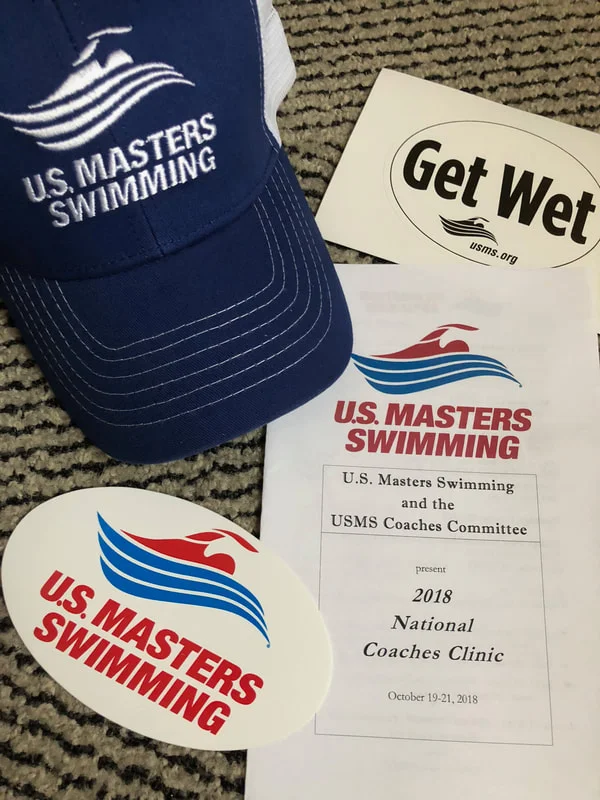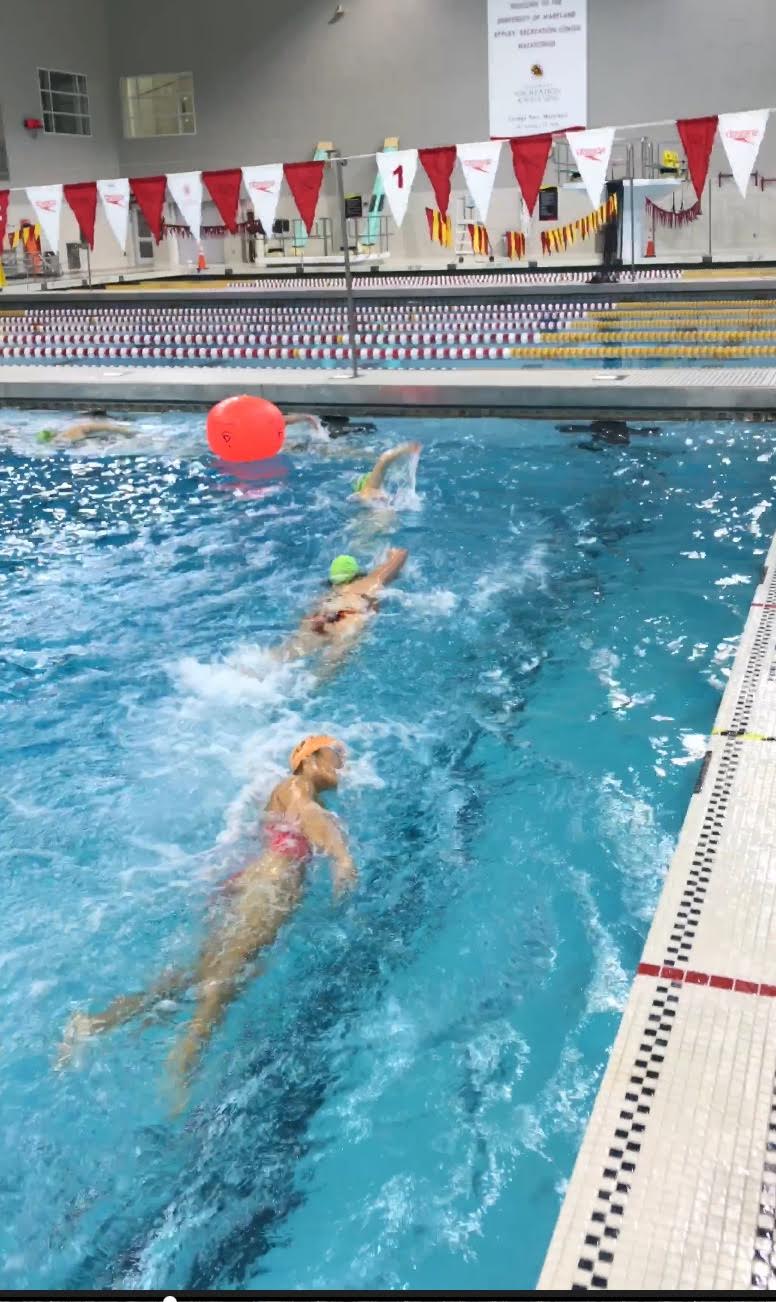Contributed by Stacy Sweetser, GSP & Coach of SWS Originally published on her blog, Simply Faster
Presenters: Jack Mcafee, Bo Hickey, Dr. Gary Hall Sr., Dr. Joel Stager, Coach Bruce Gemmell
After an intense two-day clinic filled with captivating speakers, a few Olympians, and a roaring crowd of USMS coaches with impressive backgrounds, my head was spinning with delight on my way home. How could I share what I learned? How can swimmers get faster right now with this information?
I distilled the hours of lecture, demonstration and pool time down to “Five Key Takeaways.” Ultimately these take aways are real training habits swimmers and triathletes can implement THIS WEEK to become healthier, stronger and faster at any age.
1) Dryland Warmup
Shoulder Flexibility Testing
Bo Hickey, a Certified Strength & Conditioning Specialist, detailed the importance of a dynamic warm up before hitting the water. This aids in injury prevention and prepares the body before it is loaded in the water. Many runners have a standard pre-run warm up routine and swimming should be no different. Bo details a pre-swim dryland warmup via article and video here.
Takeaway: Don’t skip the dryland warmup pre-swim.
2) Reduce Frontal Drag
Plantar Flexion Exercise
Olympian Dr. Gary Hall Sr. of The Race Club reminded us we are always moving forward in the water, which happens to be 800x more dense than air! Frontal drag is significant and we have to find ways to work through the water effectively. A very common yet fixable area of drag for many triathletes is toes pointed down or out to the side when swimming. Swimmers with biking and running backgrounds can have limited plantar flexion which can increase frontal drag up to 30%. Working ankle flexibility out of the water can save valuable time in the water. Dryland training can include sitting on ankles with toes pointed inward for :20 - 2:00 at a time daily. For more on ankle flexibility and dryland work from The Race Club, click here.
Takeaway: Plantar flexibility is a critical piece to reducing frontal drag.
3) Interval Train
Coach Bruce Gemmell shared great insight into his time coaching Katie Ledecky. In addition to working hard, setting goals and prioritizing self-care, swimmers must know their training zones/paces. Similar to training on the bike using Functional Threshold Power and running using VDOT values, swimmers should be aware of their various working paces (easy, aerobic, aerobic endurance, and anaerobic). Coach Gemmell uses the Jon Urbanchek color system with his swimmers. Each swimmer has detailed charts of their various paces in various work zones. There is an app for that!
Takeaway: Interval train with specific paces. Perform a threshold test.
4) Perform Tri Specific Skills in the Pool
Open Water Drafting and Buoy Turn Skills in the Pool
Jack Mcafee, IMFL Male Winner 2016 and Helen Naylor, USMS National Coaches Committee Volunteer, reviewed opportunities to work open water skills in both the open water and pool throughout the season. These skills can easily be practiced in a pool if open water is not available. Pack swimming, drafting skills, treading water starts, sighting, etc. can be creatively practiced in pools. This video details various ways to draft in open water, and can be adapted for the pool with 2+ people in a lane. Various sighting skills shown here can be perfected in the pool before hitting the open water.
Takeaway: Open water skills can be practiced in a pool.
5) Refuel
Recovery Drink or Quality Whole Foods 30-45min Post Workout
Joel Stager PhD., Indiana University, spoke of his recovery fuel study. After a pre season build, his swimmers were tired, sick and not improving despite solid training. He instituted a recovery fueling plan using chocolate milk within 45min post practice. The team bounced back into the season healthier and stronger than before. Read the formal study from IU on Chocolate Milk as a Post Exercise Recovery Aid. The body must be refueled shortly after working out to recover well. More information on nutrition secrets to improving fitness here.






